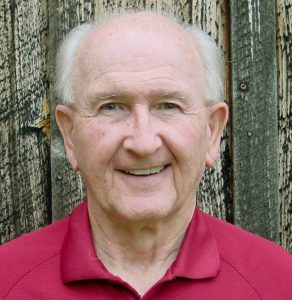VIEW FROM WEST DAVENPORT
NYC Looking Upstate
To Solve Its Problems
By MICHAEL ZAGATA • Special to www.AllOTSEGO.com
Most of you will recall the contentious debate between those who wanted the right to frack for natural gas beneath their property and those who wanted fracking banned. A foundation paid lawyers to visit towns and help them draft language prohibiting the practice of fracking within their jurisdictions under the aegis of “home rule.”
Concerned citizens, fearing ground water contamination, pressured the Governor to ban the practice. The Governor, of anti-fossil fuel persuasion, used the DEC and DOH to further his agenda and, for now, those against fracking succeeded.
Home rule and environmental protection were credited with that success.
•

The question is, however, what will happen to home rule and environmental protection when proposed energy-development projects fall within the definition of being “renewable”? After all, they fall within the purview of things “blessed” by our Governor.
Well, now we have the answer and it is called the “Accelerated Renewable Energy Growth and Community Benefit Act.” It was introduced by the Governor as part of his amended budget and it will affect our way of life in upstate New York.
It amends the Public Service Law, the Economic Development Law, the Real Property Tax Law, the General Municipal Law, the Public Authorities Law, the Environmental Conservation Law, the state Urban Development Corporation Act and the state Finance Law, in relation to accelerating the growth of renewable energy facilities to meet critical state energy policy goals.
What does that mean to those of you who used home rule and environmental protection to stop fracking and wind power projects in the past?
•
Based upon an article posted in www.eenews.net, Michael Gerrard, a professor of environmental law at Columbia Law School who runs a legal initiative supporting renewable projects in rural towns, said New York “has been slow to override” local opponents who have often succeeded in persuading towns to restrict development.
Cuomo’s plan appears to be a formidable solution, he said. “I think it would be one of the strongest state-level renewable-siting laws in the country.”
According to Anne Reynolds, Alliance for Clean Energy New York, “Many New York residents hold a dimmer view of renewables: A few large wind farms have already been delayed or cancelled because of locals (shame on us) who see them as a blemish on their landscapes and a threat to wildlife, property values and even groundwater.”
Sound familiar?
The DEC and the Public Service Commission would no longer be responsible for reviewing wind and solar power applications. Yes, you read that right. That authority would be transferred to an economic development entity. What happened to the State Environmental Quality Review Act? What kinds of projects are we talking about?
•
Under Cuomo’s bill, new transmission infrastructure (that translates to new power lines like the one you fought a few years back), cited by state officials as a critical way to bring Upstate renewable power down to New York City-area centers of demand, would get streamlined treatment.
In addition, regulators would undertake a comprehensive study of the grid’s future distribution and transmission needs. Please remember the bill’s title – Accelerated Renewable Energy and Community Benefit Act.” Exactly what community is being benefited – it certainly isn’t any from Upstate!
This will be the third time the city has imposed its will on Upstate – twice before for water (Adirondack Forest Preserve and Catskill Watershed) and now for energy. If you think this is fairy dust, consider the 3,000 acres solar farm being considered for West Laurens – and that’s just the beginning.
•
If you recall, I warned about the environmental impacts associated with renewables, but many readers dismissed those warnings because they had already drunk the Kool-Aid.
Well, those predictions have come true and may likely be far worse than originally thought, as already completed renewable projects have fallen short of their projected energy production predications and that, along with the fact that 40 percent of the energy will be lost before reaching New York City due to line drop, will mean even more solar and wind farms on our landscape.
That translates into more scars on our landscape and more wildlife evicted from habitats.

